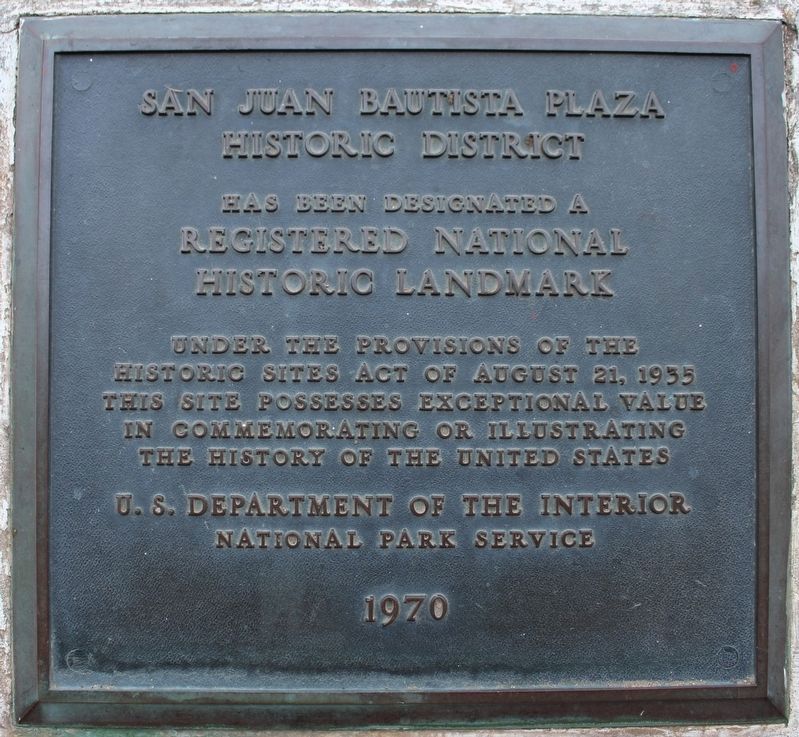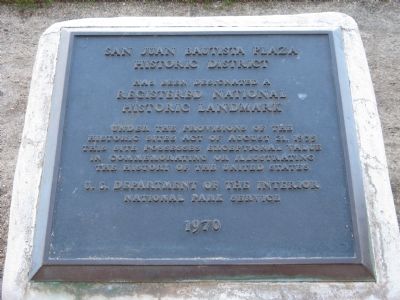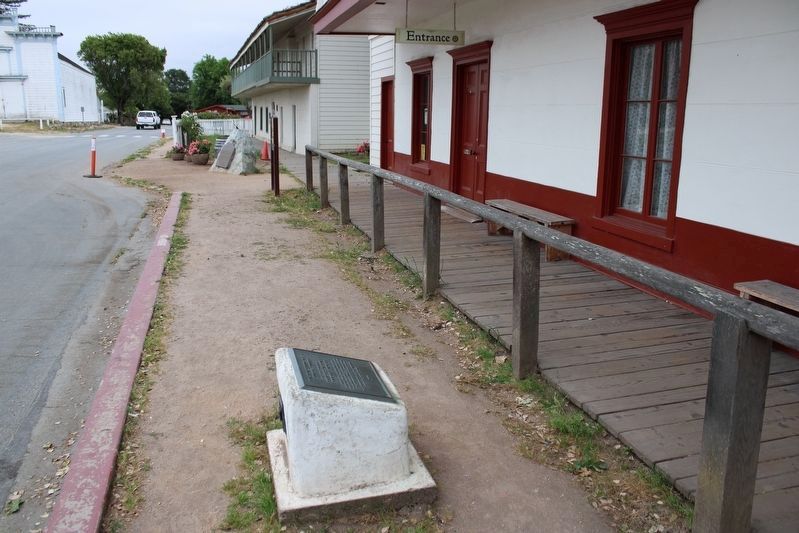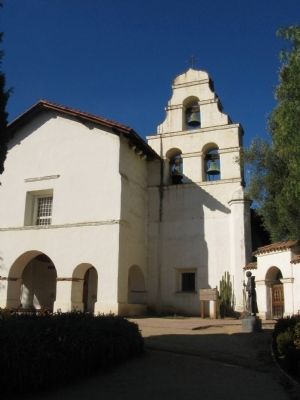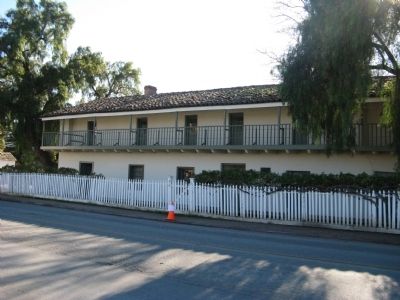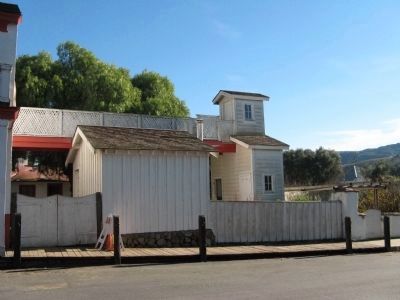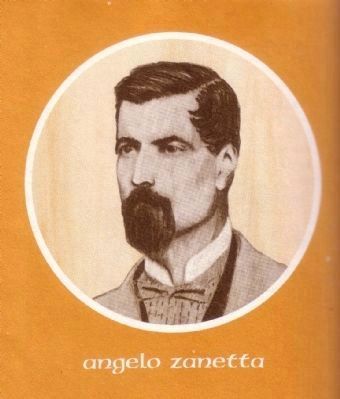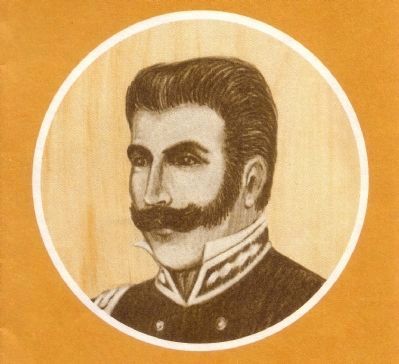San Juan Bautista in San Benito County, California — The American West (Pacific Coastal)
San Juan Bautista Plaza Historic District
has been designated a
Registered National
Historic Landmark
Under the provisions of the
Historic Sites Act of August 21, 1935
This site possesses exceptional value
in commemorating or illustrating
the history of the United States
Erected 1970.
Topics and series. This historical marker is listed in these topic lists: Churches & Religion • Native Americans • Parks & Recreational Areas • Settlements & Settlers. In addition, it is included in the National Historic Landmarks series list. A significant historical year for this entry is 1935.
Location. 36° 50.7′ N, 121° 32.165′ W. Marker is in San Juan Bautista, California, in San Benito County. Marker is on Second Street south of Mariposa Street, on the right when traveling south. Marker is located at the San Juan Bautista State Historical Park in front of the Plaza Hotel. Touch for map. Marker is in this post office area: San Juan Bautista CA 95045, United States of America. Touch for directions.
Other nearby markers. At least 8 other markers are within walking distance of this marker. Castro/Breen Adobe and Plaza Hotel (a few steps from this marker); Progress Becomes History (within shouting distance of this marker); The Amah Mutsun Garden (within shouting distance of this marker); Castro - Breen Adobe (within shouting distance of this marker); Veterans of the World War (within shouting distance of this marker); Town Jail (within shouting distance of this marker); Mission San Juan Bautista (about 300 feet away, measured in a direct line); El Camino Real (about 300 feet away). Touch for a list and map of all markers in San Juan Bautista.
More about this marker. This location is California Historical Landmark No. 180
Also see . . . San Juan Bautista State Historic Park. (Submitted on January 16, 2009.)
Additional commentary.
1. This Site Has Been Designated as a National Historic Landmark:
Statement of Significance (as of designation - April 15, 1970):
Striking example of a 19th century village built on a traditional Spanish-Mexican colonial plaza plan, the district is composed of five buildings, all facing the Plaza and all completed between 1813 and 1874.
Note: The five buildings mentioned are: The Mission, The Plaza Hotel, The Castro Adobe, The Plaza Stable and Plaza Hall.
— Submitted January 16, 2009.
2. San Juan Bautista
This area was:
* Site of one of California's twenty-one Missions
* District Headquarters for the northern half of Alta California
* Rallying point for two revolutions - Mexican-American War and Bear Flag Revolt
* Site of an international incident - John Fremont and Gavilon Peak
* Staging, trade, and supply center
* Locale of the famous bandit Tiburcio Vasquez
— Submitted January 16, 2009.
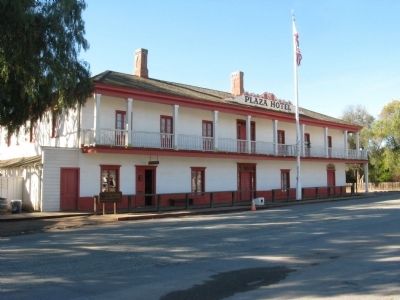
Photographed By Syd Whittle, January 11, 2009
3. The Plaza Hotel
Angelo Zanetta built this hotel in 1858. It has been restored to look as it did in the 1860's, when San Juan Bautista was an important stop on the stage route between Northern and Southern California. Zanetta purchased the land and the adobe buildings that stood here in 1858. The buildings had housed Spanish soldiers as early as 1813-1814, but their walls were still solid. Zanetta added a wooden second story complete with balcony, sleeping rooms and other conveniences. The hotel's grand opening was celebrated in January 1859. Source: San Juan Bautista State Park Brochure
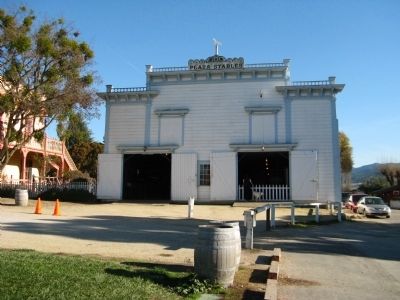
Photographed By Syd Whittle, January 11, 2009
7. Plaza Stables
The Plaza Stable was built around 1874 to handle the stage and wagon traffic during San Juan's busiest years. It was operated by a succession of men, including John Comfort, a partner of Angelo Zanetta. At one time there were seven stage lines operating through San Juan and up to eleven coaches arriving and departing daily.
Source: San Juan Bautista State Historic Park Brochure
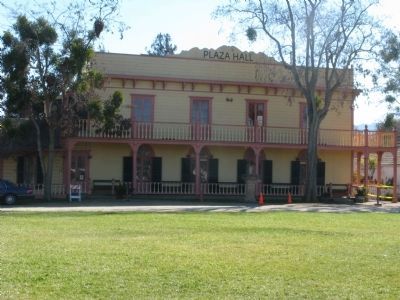
Photographed By Syd Whittle, January 11, 2009
8. Plaza Hall
John Comfort and Angelo Zanetta acquired this land and the existing adobe building which may have housed cavalrymen and even earlier served as a monjerio or dormitory for unmarried Mission Indian women.
In 1868 Zanetta and Comfort used the adobe bricks to form the ground floor of a two-story building that they hoped would become the county courthouse for the newly formed San Benito County.
After Hollister was chosen as the County Seat, the first floor was modified to serve as part of the hotel and later as the residence of Zanetta. The upper floor was used for public meetings and celebrations.
Source: San Juan Bautista State Historic Park Brochure
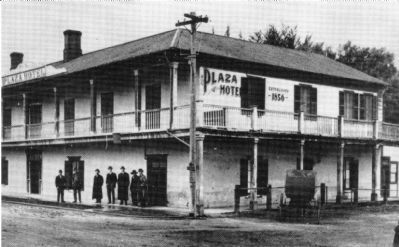
Photographed By Plaza History Association, San Juan Bautista SHP, 1998
9. Plaza Hotel, c1911
Description on postcard:
The ground floor was built for the Spanish soldiers in 1813. In 1856, Angelo Zanetta remodeled the building and added the second floor. The hotel was in continuous use until purchased by the state in 1933.
Photo credit: California State Parks
The ground floor was built for the Spanish soldiers in 1813. In 1856, Angelo Zanetta remodeled the building and added the second floor. The hotel was in continuous use until purchased by the state in 1933.
Photo credit: California State Parks
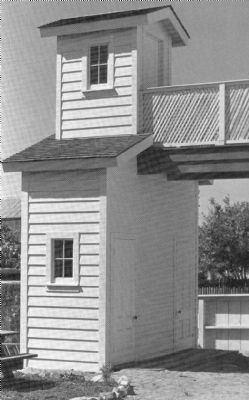
Photographed By Plaza History Association, San Juan Bautista SHP, 1998
10. Two Story Outhouse at the Plaza Hotel, c1982
Description on postcard:
The outhouse was built in the 1850's for Plaza Hotel guests. Women and small children had access to the upper unit from the second floor of the hotel. The men and older boys used the ground floor units.
Photo courtesy of: Dave Hammell
The outhouse was built in the 1850's for Plaza Hotel guests. Women and small children had access to the upper unit from the second floor of the hotel. The men and older boys used the ground floor units.
Photo courtesy of: Dave Hammell
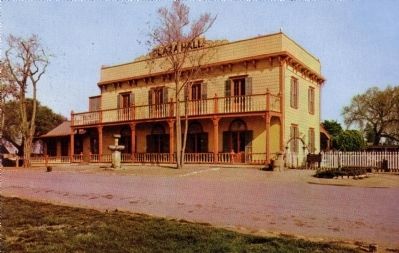
Mike Roberts, Distributed by Bob Ball, Visalia, Ca, circa 1977
14. Plaza Hall (Zanetta House)
Description on Postcard:
SAN JUAN BAUTISTA, CALIFORNIA
ZANETTA HOUSE
Outer walls of adobe from nunnery erected here in 1815. Zanetta remodeled building. Opened as Plaza Hall in 1868. Later used lower floor as residence.
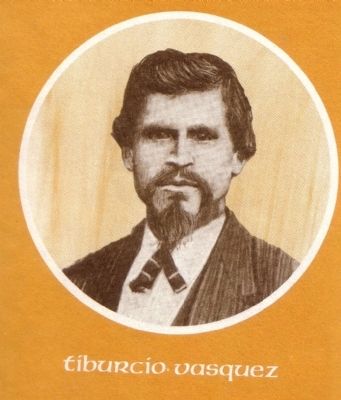
Photographed By 1977 San Juan Bautista SHP Brochure
15. Tiburcio Vasquez
One of California's most famous outlaws was associated with San Juan during the 1860's and 1870's. Born and raised in Monterey, Vasquez had many friends in the area. He was said to have a way with women and was widely considered brave, cunning and, at times, a gallant gentlemen. His activities were well documented and he was a hero of sorts to Mexican Californios who often helped him outwit law enforcement officers and their posses.
Credits. This page was last revised on December 14, 2023. It was originally submitted on January 16, 2009. This page has been viewed 2,961 times since then and 24 times this year. Last updated on August 7, 2020, by Craig Baker of Sylmar, California. Photos: 1. submitted on June 7, 2023, by Joseph Alvarado of Livermore, California. 2, 3. submitted on January 16, 2009, by Syd Whittle of Mesa, Arizona. 4. submitted on June 7, 2023, by Joseph Alvarado of Livermore, California. 5, 6, 7, 8. submitted on January 16, 2009, by Syd Whittle of Mesa, Arizona. 9, 10, 11. submitted on January 18, 2009, by Syd Whittle of Mesa, Arizona. 12, 13, 14, 15. submitted on January 16, 2009, by Syd Whittle of Mesa, Arizona. • J. Makali Bruton was the editor who published this page.
